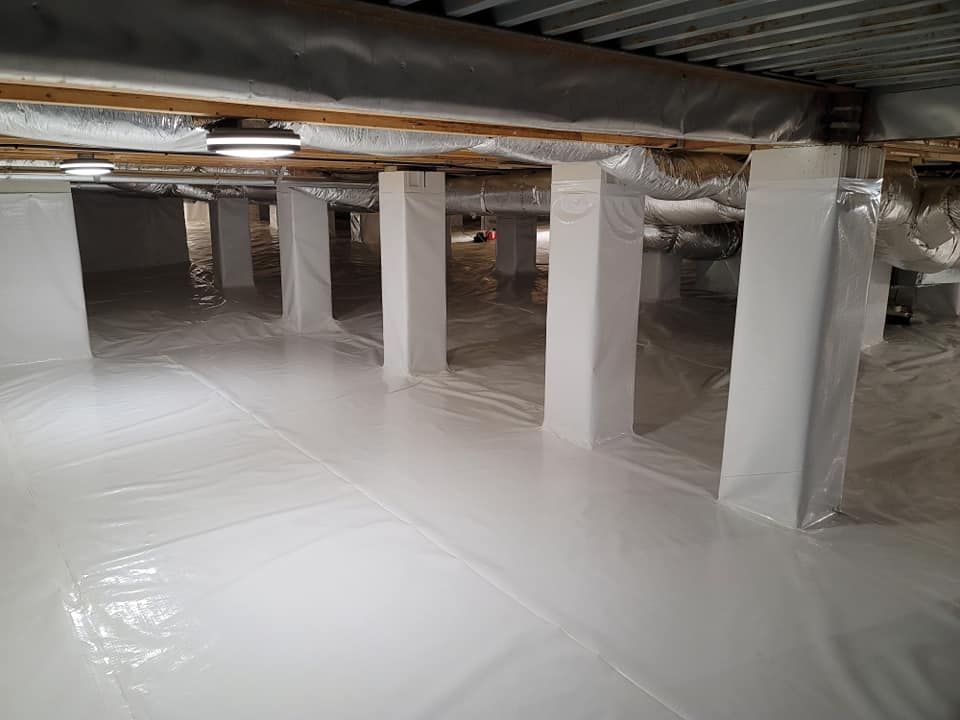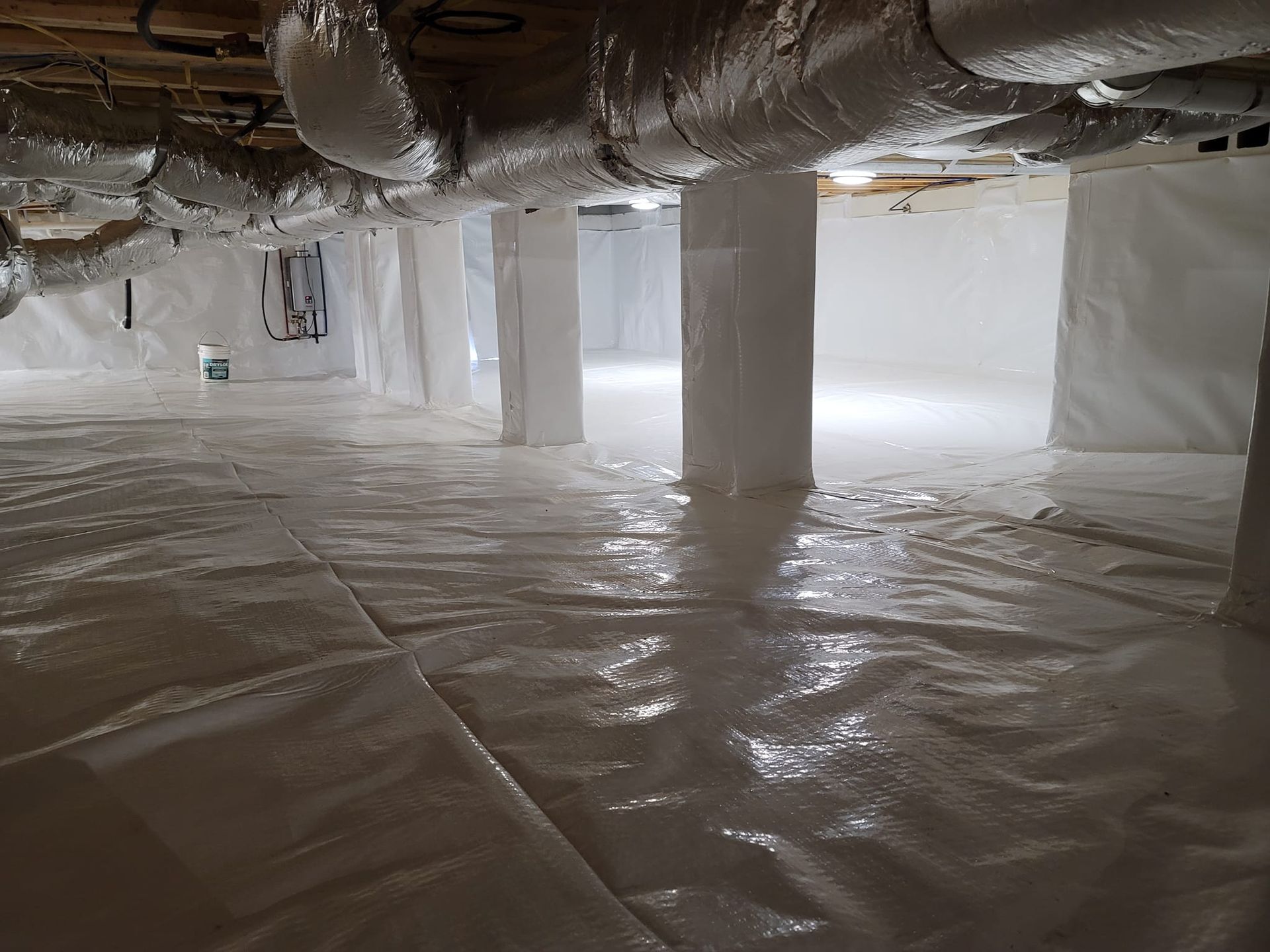Achieve a Healthy Home with Crawlspace Encapsulation Services
Sealing the floors and walls of your crawlspace will help keep water and moisture out to prevent damage to your home’s foundation and the growth of mold. Count on Cobb Crawlspace Repair LLC to protect your home, health, and wallet with professional crawlspace encapsulation services in Anderson, SC. Contact us today to learn more or to schedule an inspection.

What is a Crawlspace Encapsulation?
A basic crawlspace encapsulation involves installing a vapor barrier on the ground, foundation walls, and around any supporting piers. This barrier is sealed at the top of the foundation wall, and all seams are sealed with waterproof tape. This seal prevents the evaporation of groundwater from below and also reduces the movement of moist air through voids and cracks in the foundation wall.
A dehumidifier is installed to remove water vapor from the air, reducing the likelihood of fungi growth, wood rot, and other issues that arise from a damp environment. A more thoroughly sealed crawlspace will reduce the re-entry of moist air and allow your dehumidifier to run less.
There are various ways to improve the efficiency of your encapsulation and upgrade your air quality. This can be done by choosing a higher level of encapsulation. Some packages include the removal of saturated insulation, insulation installed on the foundation wall, physical remediation of present fungi, higher thicknesses of barrier, barriers with antimicrobial linings, and even a felt underlayment for soil gas mitigation. Any encapsulation package can be carefully tailored to your needs.

Do I Need a Crawlspace Encapsulation?
Homeowners often ask, "Do I absolutely need an encapsulation?" A good way to view an encapsulation would be to see it like the air conditioning in your home. If your air conditioning stops working, you may open the window to try to let some fresh air in. If this happens in the middle of a South Carolina summer, your home will probably feel like an oven, and while opening the windows may help some, the heat and humidity will still be quite oppressive. This is the constant state of a crawlspace without an encapsulation. Opening your foundation vents in the summer may create some ventilation, but it is no way to control the humidity under your home. Over half of the air your family breathes on the first floor of your home comes from your crawlspace.
It is common for homes with high humidity to have fungi growth on the floor joists and other wood members, fungi growth on the backing of fiberglass insulation, and even a high presence of moisture-loving pests such as roaches and camel crickets. This food source becomes a welcome mat for rodents and snakes. The combination of standing water, fungi growth, and pest waste yields odors and bacteria that homeowners are often already feeling the effects of. These odors and recurrent health issues can even be the first symptom leading homeowners to investigate the crawlspace.
The best way to protect the wood structure of your home and your air quality is by addressing the humidity and moisture under your home through encapsulation.
What About Radon?
Another frequent concern around encapsulation is how it addresses the possibility of radon presence. Our most popular moisture solution package includes an interior French drain and encapsulation with felt underlayment. While each of these components has its own purposes and plays a vital role in controlling water in both liquid and vapor forms, they also work together to form the basis of a suction-based soil gas mitigation system. The interior French drain, recommended for controlling water intrusion and preventing erosion, also creates a low-pressure channel under the encapsulation from which to pull soil gasses. The felt underlayment, unique to the Cobb Crawlspace Process, creates a gap between the ground and the encapsulation barrier to allow soil gasses to move into the low-pressure channel and keep the barrier from clinging to the ground. The encapsulation creates a seal around the foundation of the home to prevent the rise of radon gas. This ensures that if Radon or other soil gases become a concern, there is no need to backtrack or reinstall the encapsulation. You would simply have a Radon specialist install a soil gas fan from the designated outlet on our InstaDry Sump basin cover and discharge the gas away from the home according to code. One fan is all it takes!










